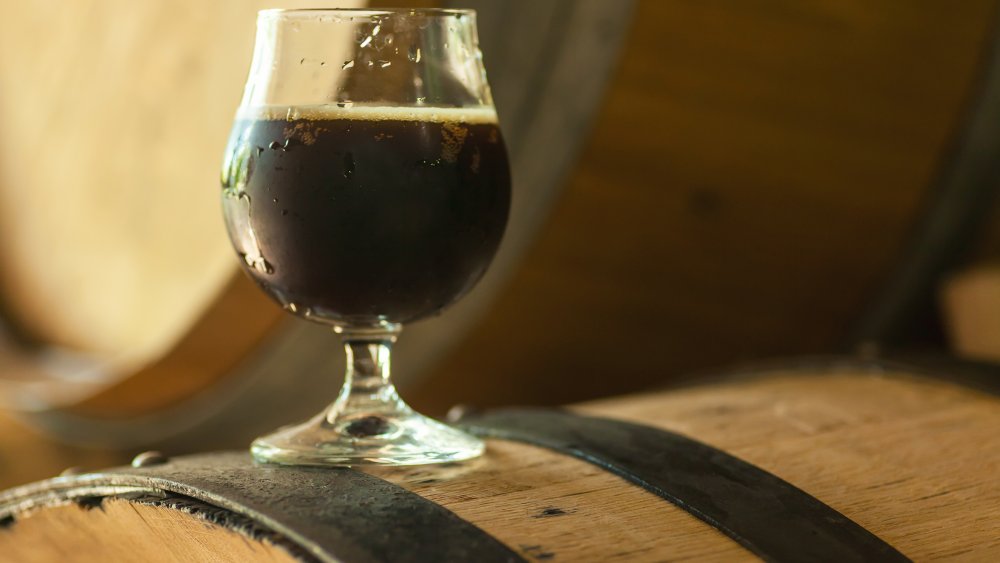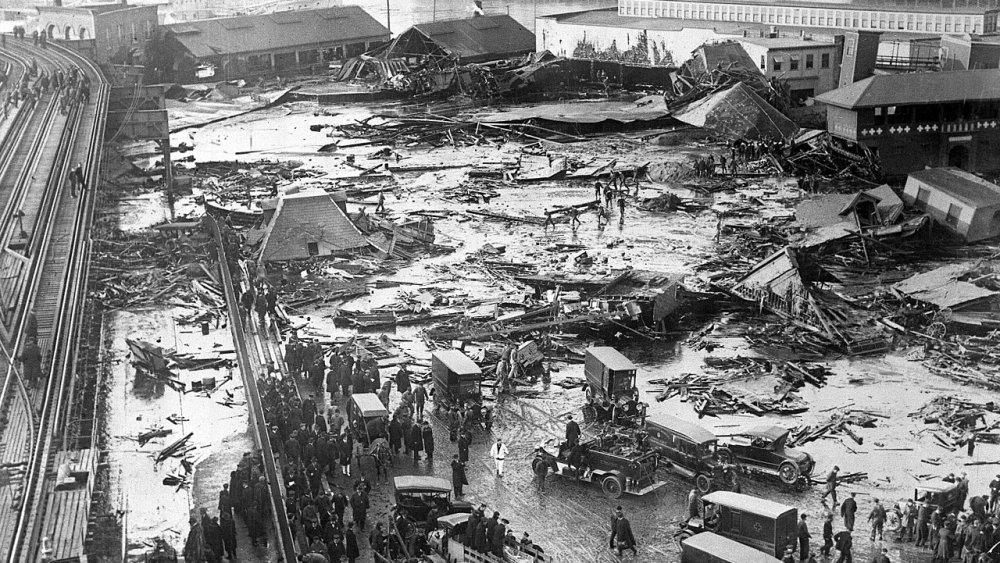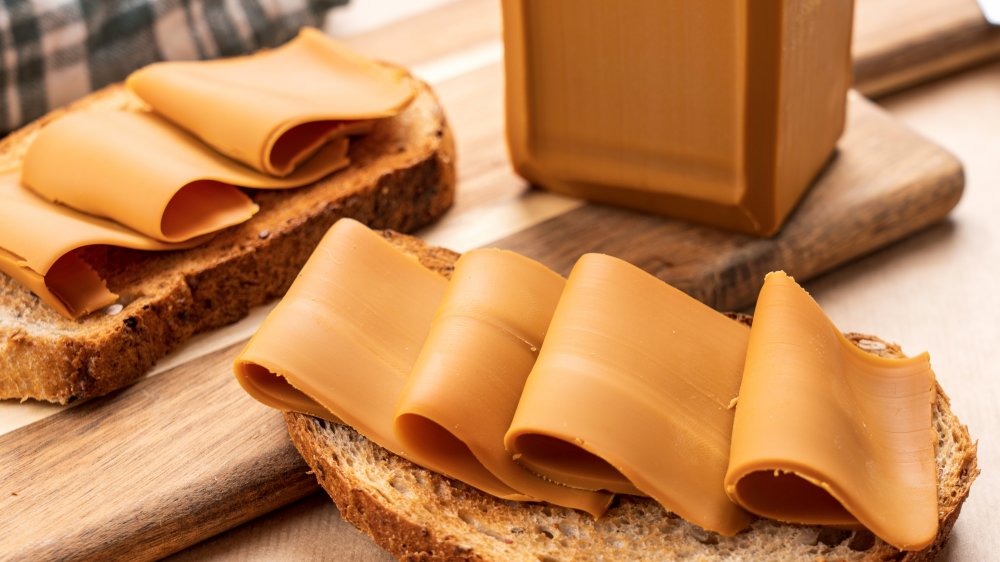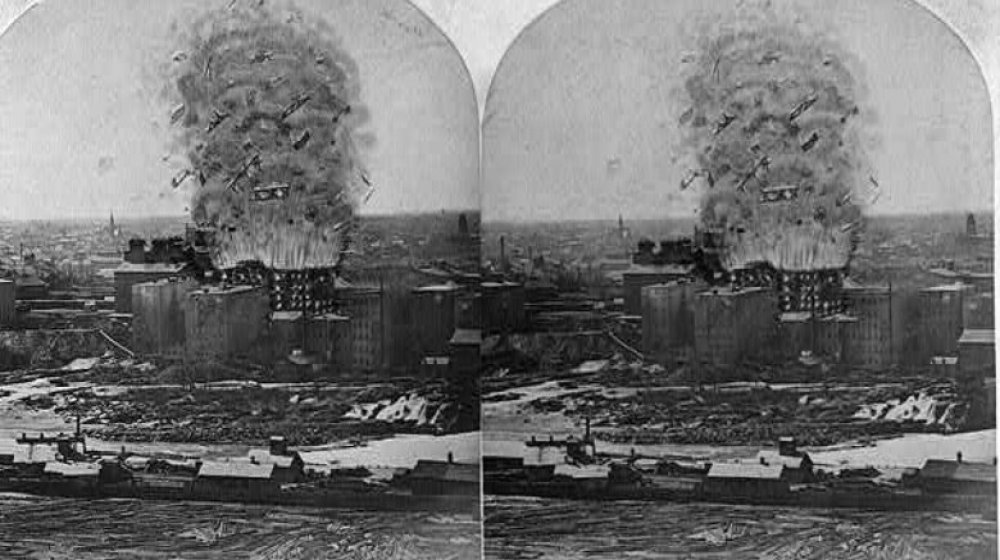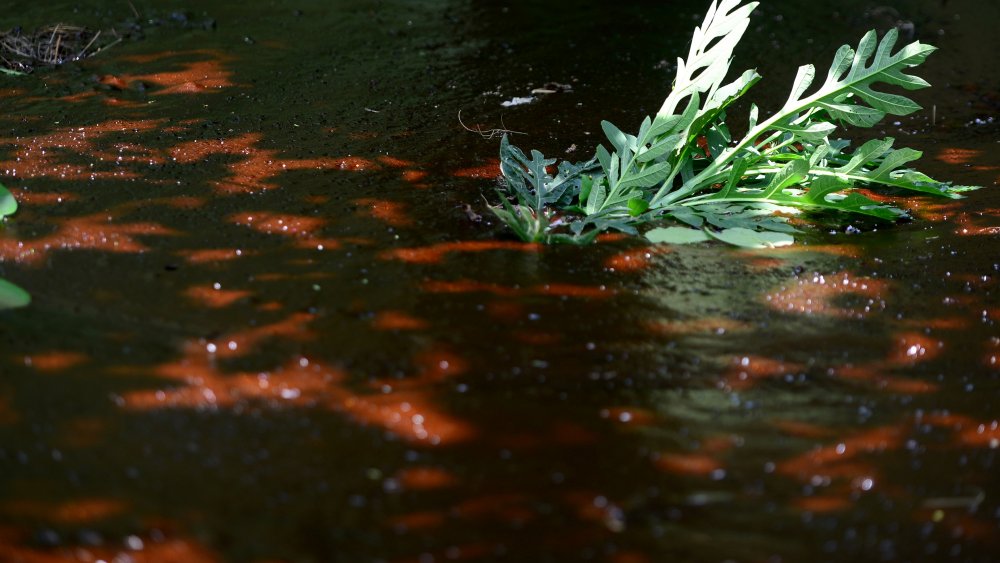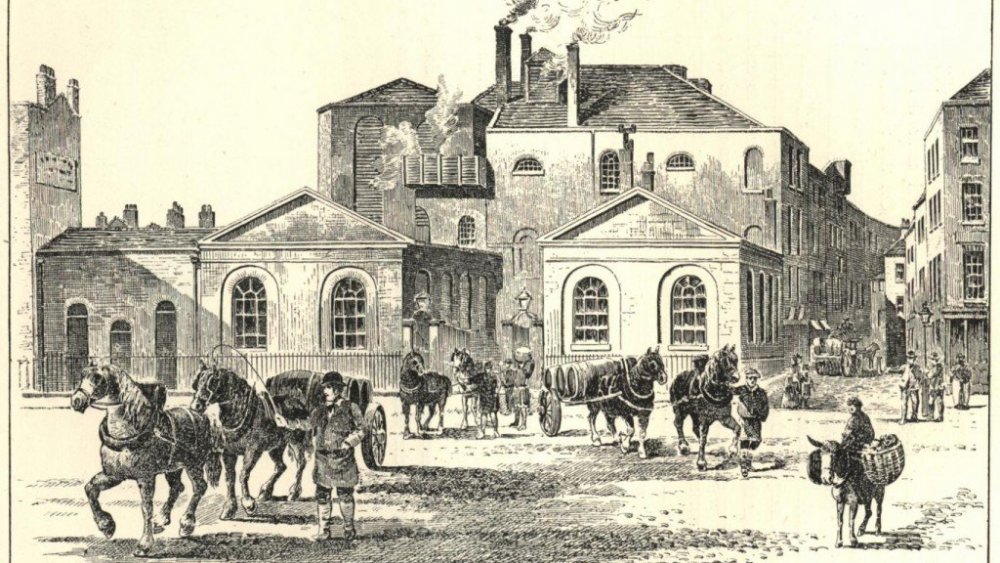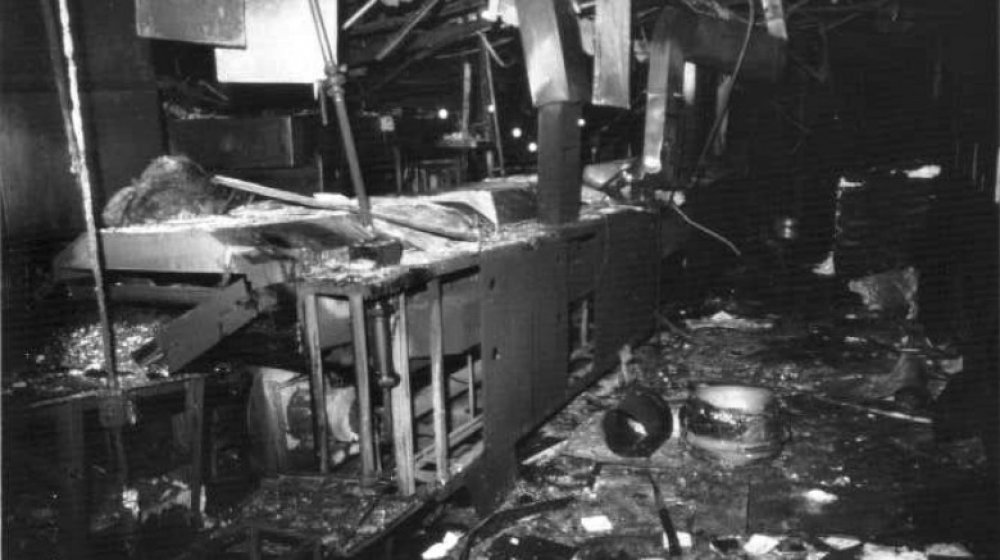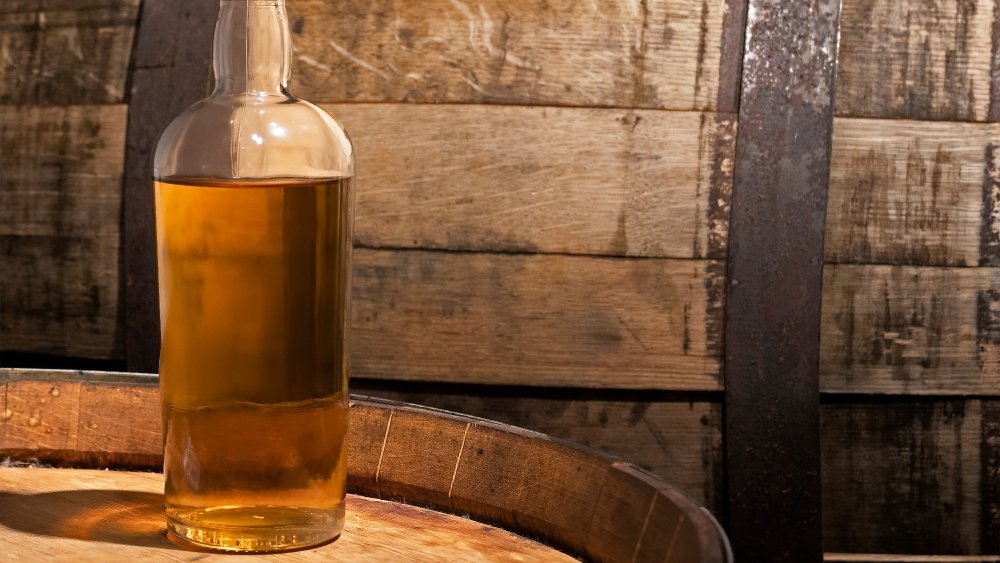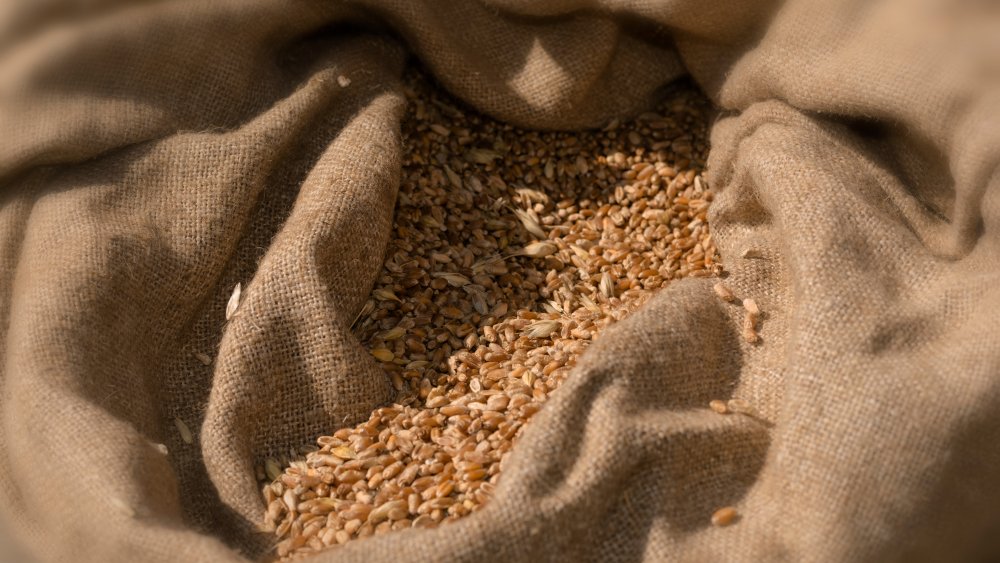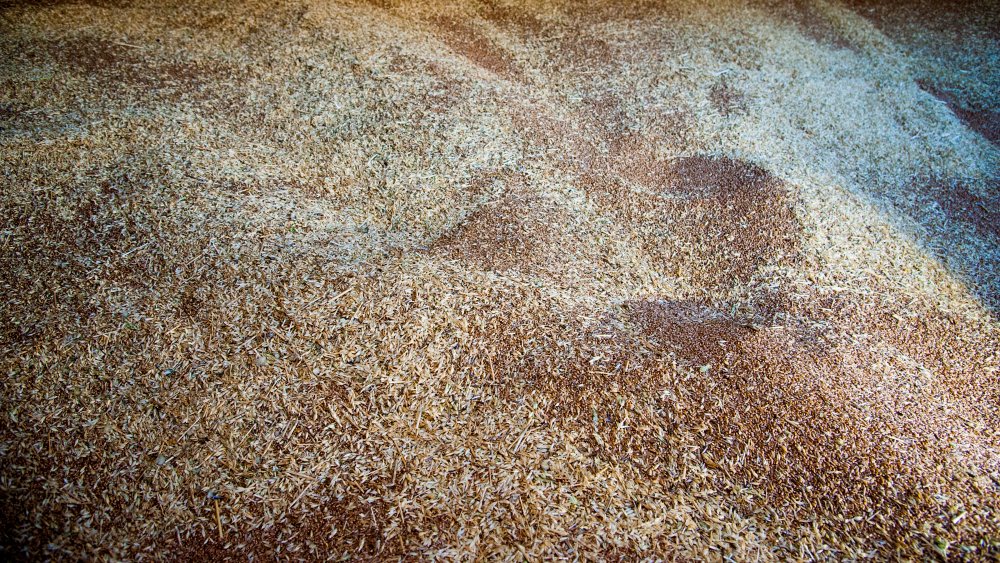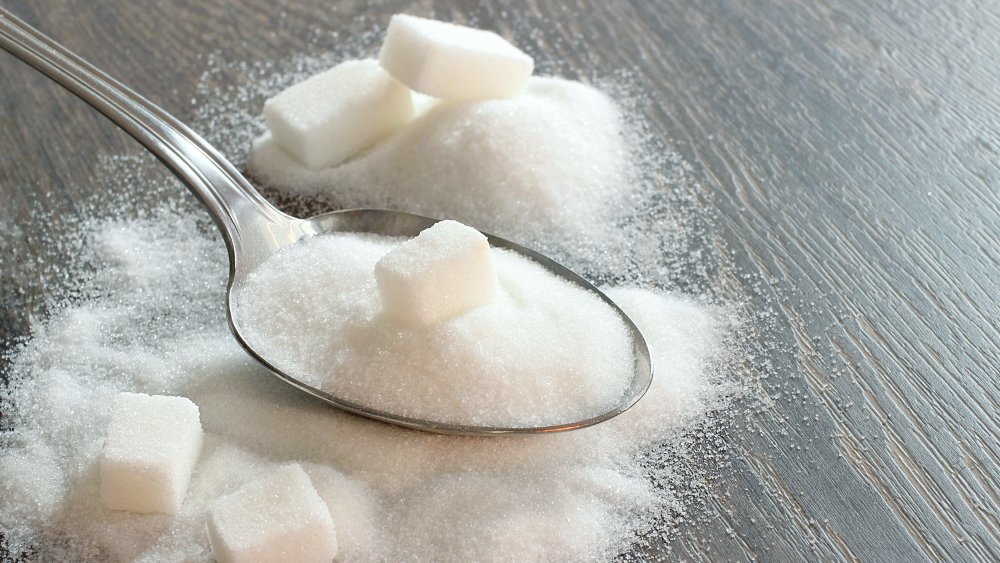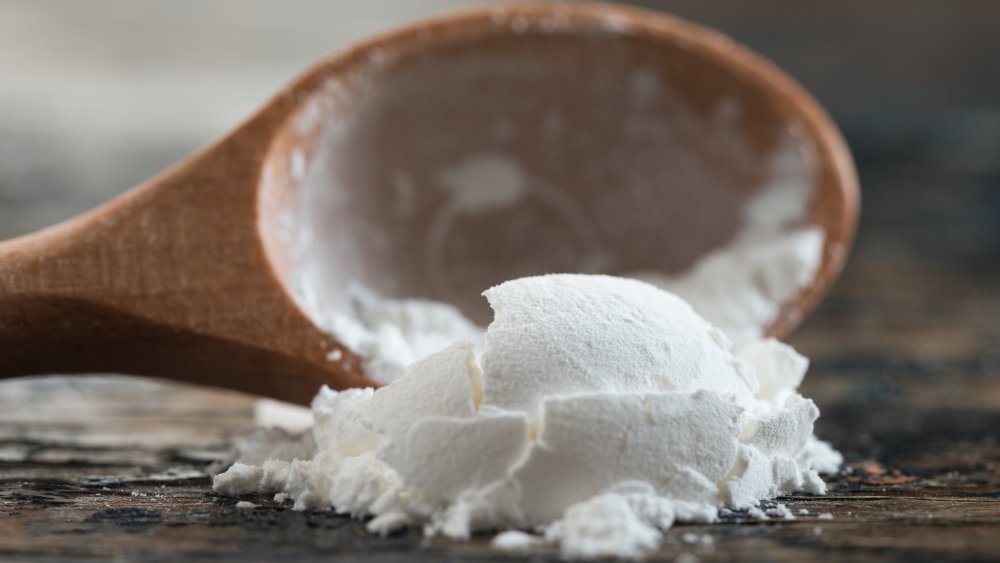History's Most Bizarre Food Disasters Explained
The history books are full of tragedies, from the natural to the man-made. We hear a lot about the tragedies of war, disasters caused by the weather, about terrible accidents... but food-related disasters? Not so much, right?
And that surprising, because there are actually some fascinating incidents in history where food has claimed lives in ways that are as epic and large-scale as they are heartbreaking. They're not the sort of thing that are likely to be taught in school, but that's all right — that's what we're here for.
We're going to talk about some often-overlooked historical tidbits that remind us food isn't just dangerous because it can cause things like diabetes or food poisoning — it can also be large-scale terrifying, can wreak havoc on entire cities, and can claim lives on a massive scale. Don't believe it? Let's talk about some of the world's strangest, food-related disasters — and some are more recent than you might expect.
Boston was flooded by molasses
The idea of a tank of molasses randomly bursting and flooding the streets with the sticky, sweet substance sounds pretty hilarious, but in truth? It was nightmarish.
It happened in Boston on January 15, 1919, and it had been coming for a long time. A tank of molasses (owned by US Industrial Alcohol, who was ultimately found liable for the disaster) had been leaking for a while. It held 2.5 million gallons, and the design was flawed from the beginning — it was never built strong enough, and collapse was inevitable.
Aerospace engineer Nicole Sharp says (via History) that since molasses is a non-Newtonian liquid, that kind of quantity under that pressure would have behaved more like a mudslide or lava flow than molasses out of a bottle in your kitchen.
The 15-foot wave raced through the streets at around 35 mph, and people were swept along with it. Those that survived suffered broken bones and disfiguring injuries; according to The Guardian, it was months before the bodies of the 21 dead (which included children) were recovered. Cleanup efforts weren't helped by the fact it was unseasonably warm when the tank burst, and the molasses hardened as temperatures plummeted.
History Today says it took 87,000 man-hours of work to haul, chisel, and saw away the hardened molasses that covered everything — including those who were unfortunate enough to be in the path of the tidal wave.
Blazing goats' cheese shut down a street in Norway
When you think of flammable foods, you probably don't think of cheese. But in 2013, a cheese fire burned so hot that it shut down a Norweigan tunnel for days, until experts could confirm the stability of the tunnel hadn't been compromised, and that it was free of potentially toxic gases.
According to the BBC, the fire itself raged for five days before it was extinguished and emergency crews could even begin the recovery operation. Surprisingly, no one was hurt, but it was an important — and strange — lesson.
The cheese wasn't just your standard cheddar, it was a sweet goat cheese called brunost (pictured). According to NPR, it isn't made like other cheeses (and according to them, it's not technically a cheese at all): here, the whey is used, the curds are discarded, and it's boiled into a sweet, caramel-colored solid. It's so high in sugar and fat that it burns almost as hot as gasoline... and there's a fun fact for the next time you're served a cheese platter.
The largest flour mill in the world was destroyed in a fiery explosion
In 1874, Cadwallader Washburn built what would be the largest flour mill in the world. It was seven stories tall, fueled by water power channeled from the mighty Mississippi River, and with more than 200 workers, the Minneapolis Post says it was one of the city's largest employers. Four years after it was built, it exploded.
The explosion happened on May 2, 1878, and it was heard miles away. The entire building — along with surrounding mills — was completely destroyed, and the 14 workers who were in the mill for the night shift were all killed. Fire spread quickly, engulfing neighboring buildings and killing four more people. According to MNopedia, it burned so hot and so fast that firefighters couldn't get close enough to put out the blaze quickly.
Investigations found that the fire had been caused by a single spark, one that came from dry millstones rubbing together. That one spark ignited the flour dust that hung in the air, and the incident changed the way flour mills were built — starting with Washburn, who overhauled his mill design to be safer.
According to Wired, many mills now use "explosion-proof" motors for this very reason. Flour dust, it turns out, is more explosive than coal dust: particles in the air are close enough to start a chain reaction, and there's just the right amount of oxygen to fuel the fire.
Honolulu's marine life was devastated by molasses
Molasses might be delicious when it's in cookies, but when it's in the ocean? Not so much.
A pipeline in Hawaii that pumps molasses into cargo ships for transportation was found to have a fault. In 2013, that pipe in Honolulu Harbor started leaking, and it spilled around 233,000 gallons of the stuff into the water. The results were devastating; the molasses immediately sank to the bottom, and when divers were sent in to assess the damage, their report (via NPR) was chilling: "Everything down there is dead."
Fish, crabs, eels... anything and everything that was in the harbor was dead. Just as bad? The molasses was a major pollutant, and experts issued severe warnings about the likelihood of an increase in bacteria and, in turn, an increase in the number of predators that were attracted to the area.
Why was it so bad? A few reasons: experts say that since molasses sinks and dissolves, it made cleanup next to impossible. It absorbed the oxygen in the water, suffocating the animals there, and they estimated the environmental impacts would be felt for years in part because of the location of the spill. Most of the molasses was dumped into a harbor, not the open ocean, so the environment's natural cleanup mechanisms were going to take a long, long time to repair the damage.
Tapioca almost sank a ship
It really does sound like an urban legend, and here's how it goes: it's 1972, and a freighter is sailing along when a minor fire starts. It smolders along for a bit, but the crew can't seem to completely put it out. So, they pull into a dock in Cardiff, Wales, in order to get some proper TLC. The firefighters at the dock turn their hoses on the fire, and something strange starts to happen.
The ship's cargo just happened to include 1,500 tons of tapioca. Where it had previously been dry, with the water from the hoses and warmth from the fire, it was now wet and warm. And that, we all know, is exactly the sort of conditions that causes tapioca to cook. And cook, it did. It started to plump, too, straining the hull of the freighter to bursting. The Pittsburgh-Post Gazette says it wasn't just the firefighters trying to save the ship any more, it was scores of dock workers, too, who were suddenly unloading literal tons of tapioca in an attempt to save the ship. They did, and surely, there's more holes in that story than a ship full of Swiss cheese. Right?
According to Snopes, it's absolutely true. The freighter was called the Cassarate, the fire had been burning for 25 days at sea, and one fire chief actually uttered the words, "tapioca time bomb." Who would have thought?
London was once flooded with beer
Streets filled with beer might seem like a dream come true, but when a massive storage tank at the Horse Shoe Brewery in London, burst in 1814, it proved that it was closer to a nightmare.
According to Historic UK, it was a 22-foot-tall fermentation vat that ruptured first. The force collapsed part of the brewery and several more vats; somewhere around 320,000 gallons of beer were dumped into the surrounding St. Giles Rookery. The 15-foot wave collapsed houses, flooded others, and killed — a lot. The mourners who were attending the wake of a 2-year-old boy died in the flood, along with a mother and daughter who were sitting in their home drinking tea when the flood happened. More fortunate people were pulled from the rubble, but here's where the story turns even darker.
At least one more house was destroyed after the flood. How? Families were exhibiting the corpses of loved ones who had died in the accident, and so many people came to see that the home's floor collapsed.
According to historian Martyn Cornell (via the Smithsonian), there's at least one part of the oft-told tale that's completely exaggerated. While it's often said that thirsty mobs descended on the scene and started collecting as much beer as they could, that's not in any of the contemporary reports. Instead, it seems an eerie calm descended over the area, in hopes of making it possible to hear survivors who were trapped in the ruins.
The tragedy of the Imperial Foods fire
Imperial Foods is in North Carolina, and an accident on September 3, 1991, resulted in one of the state's worst industrial disasters. It started with something seemingly small, but the resulting fire killed 25 people and injured another 56.
According to Government Technology, it started when a hydraulic line near one of the chicken processing plant's fryers ruptured. The local fire chief remembered starting his day at 8 a.m. and around 30 minutes later, the plant's operations manager ran in to tell them the plant was going up in flames.
At the time, firefighters didn't know there was anyone inside. There was — about 90 people were working when the fire broke out — and they had found getting out of the building was impossible. Emmett Roe, the plant's owner, had reportedly ordered the emergency exits be locked from the outside, to prevent theft.
According to the Los Angeles Times, the 11-year-old plant had never been subjected to safety inspections that would have discovered glaring safety violations like locked emergency exits. Witnesses on the outside of the building later said they could hear the screams of those who were trapped, and when the fire was finally put out, blackened footprints were found on the doors where employees had tried to kick their way out.
It's a small consolation, but the fire did result in the hiring of more OSHA workers and stricter fines for those found in violation of workplace safety regulations.
A river of whiskey set Dublin ablaze
At 4:45 p.m. on June 18, 1875, Malone's malt house in Dublin checked their storehouse. Everything was fine. According to The Irish Times, it was just a few hours later when the alarm was raised: fire was spreading, and it was running through the streets on a river of whiskey.
There were around 5,000 barrels of whiskey in the storehouse, and by 10 p.m., so many barrels had burst that the river was about 2 feet across, half a foot deep, and ran down entire streets. Firefighters were at a loss, says Atlas Obscura; afraid water would only make the blazing booze spread further, they started by trying to create firebreaks with sand and piles of manure. The streaming liquor kept moving, though, and did some serious damage before it was finally extinguished with tons of animal dung.
Shockingly, the death toll wasn't high — and those deaths that did happen were due to alcohol poisoning. Not only were people filling jugs and vessels with free-flowing whiskey, but they were also drinking right from the river of fire. A bad idea? Absolutely. Some casks also turned up "missing" from the storehouse, and by the time the incident was over, at least 13 were dead — all from alcohol-related causes.
Hundreds in Lebanon were killed by poisoned grain
On March 9, 1972, The New York Times reported on a tragedy in Lebanon. Hospitals were being overwhelmed with people suffering from symptoms like blindness, paralysis, and brain damage, while somewhere between 100 and 400 people were already dead.
Getting information through a government-ordered news blackout was difficult, they said, but those traveling to and from the stricken country reported it seemed to be under control. So, what happened?
The entire area had been the site of a severe drought, and food supplies were low. According to World Atlas, famine was looming. The government had reached out to a company in Mexico that had created a high-yield, desert-friendly wheat crop called Mexipak, and ordered seeds. They had a long maritime journey before they got there, though, so they were coated with a mercury-based fungicide to keep them from germinating on the way. The seeds were safe to plant but not to eat, and the sacks were labeled as such — but only in English and Spanish.
The window for planting had passed by the time the sacks made it to their destination, and farmers fed their livestock with the seeds instead. Since there was no apparent consequences — mercury has a delayed response — they assumed it was safe to eat. It wasn't. The World Health Organization stepped in to reexamine regulations on the labeling of poisons, but in addition to the hundreds that died, thousands suffered permanent brain damage from eating the poisoned wheat.
Kansas's deadly grain elevator explosion
In 2010, The Wichita Eagle shared some shocking statistics: in the previous 30 years, more than 680 people were killed in Kansas while working, and one in 10 deaths happened on a grain elevator. OSHA called it one of the most dangerous jobs in the state, and that's partially because of the possibility of being buried by tons and tons of corn, or falling.
In one case, the deaths were caused by an explosion.
The DeBruce Grain elevator was in the Guinness Book of World Records as the world's largest, capable of holding enough grain to supply the entire U.S. with bread for six weeks. On June 8, 1998, grain dust was ignited somewhere along the elevator. The Department of Labor estimated there were as many as 10 explosions that were set off, and by the end, seven were dead and another 10 were injured.
According to World Grain, grain dust explosions are caused when five things come together: a confined space, oxygen, an ignition, dispersion, and grain. It creates a flash fire, and when it happens in an enclosed space — like a grain elevator — the consequences are catastrophic. Sadly, the investigation into the DeBruce explosion concluded that it could have been prevented, in spite of the fact that grain dust is about six times more explosive than black powder.
The explosion at the Imperial Sugar Company
The sugar in your kitchen isn't going to explode, but sugar in industrial or commercial quantities is quite a different story. According to the US Chemical Safety Board, the February 7, 2008 explosion that left 14 dead and 38 injured was classified as a "Combustible Dust Explosion and Fire." According to the Houston Business Journal, 17 of those who were injured suffered such severe burns they were kept in medically induced comas, and the president of Imperial Sugar Co. said that yes, it had been dust from refined sugar that was being stored in a silo that "ignited like gunpowder."
Georgia Fire Commissioner John Oxendine reported (via Reuters) that the explosion had entirely destroyed the three-story building, and that the fire had spread along the nearby river. He called it the worst industrial accident he had seen in his 14 years on the job, and according to How Stuff Works, it wasn't caused by the sugar, but the dust — a common theme in industrial accidents. They also give some other not-so-comforting information: there's usually more than one explosion, the subsequent ones are often more powerful than the first, and it just takes an estimated 1/32 of an inch of dust in just 5 percent of a room to be considered a "significant explosion hazard."
The corn starch explosion that killed across the city
Cedar Rapids residents who were sitting at home, enjoying a little peace and quiet on the evening of May 22, 1919, had no idea they were going to witness a disaster of epic proportions. It started at the Douglas Starch Works, just after the night shift clocked in. A small fire ignited the factory's supply of corn starch, and the resulting explosions were powerful enough to blow the windows out of buildings all the way across the town. By the time the smoke cleared, 43 workers were dead, 30 were injured, and — according to The Gazette — a child was hurled from a couch and killed as the blast rocked the city.
The factory was one of the area's largest employers and, according to Brucemore, it was the largest starch company in the world at the time of the explosion. Families were devastated. Some people — like Elizabeth Newbold — lost several family members in the blast that was so strong that some people reported thinking the city was under attack.
More than 200 homes were damaged and recovery efforts took a long, long time, but there's an inspiring footnote to the tale: so many people from surrounding communities showed up to help that restaurants started running out of food. Amidst the rebuilding efforts, a local paper had this to say: "One thing that may reconcile us to being human [...] is the essential compassionateness of man."
